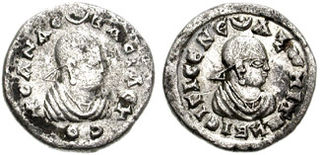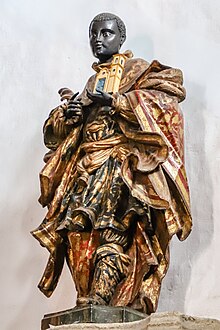
Eritrea is an ancient name, associated in the past with its Greek form Erythraia, Ἐρυθραία, and its derived Latin form Erythræa. This name relates to that of the Red Sea, then called the Erythræan Sea, from the Greek for "red", ἐρυθρός, erythros. But earlier Eritrea was called Mdre Bahri. The Italians created the colony of Eritrea in the 19th century around Asmara and named it with its current name. After World War II, Eritrea annexed to Ethiopia. Following the communist Ethiopian government's defeat in 1991 by the coalition created by various armed groups notably the EPLF and the TPLF among others, Eritrea declared its independence. Eritrea officially celebrated its 1st anniversary of independence on May 24,1993.

Ethiopia, officially the Federal Democratic Republic of Ethiopia, is a country located in the Horn of Africa region of East Africa. It shares borders with Eritrea to the north, Djibouti to the northeast, Somalia to the Northeast, East and Southeast, Kenya to the South, South Sudan to the West, and Sudan to the Northwest. Ethiopia covers a land area of 1,112,000 square kilometres. As of 2023, it is home to around 128 million inhabitants, making it the 13th-most populous country in the world, the 2nd-most populous in Africa after Nigeria, and the most populated landlocked country on Earth. The national capital and largest city, Addis Ababa, lies several kilometres west of the East African Rift that splits the country into the African and Somali tectonic plates.

Axum, also spelled Aksum, is a town in the Tigray Region of Ethiopia with a population of 66,900 residents. It is the site of the historic capital of the Aksumite Empire.

The Obelisk of Axum is a 4th-century CE, 24-metre (79 ft) tall phonolite stele, weighing 160 tonnes, in the city of Axum in Ethiopia. It is ornamented with two false doors at the base and features decorations resembling windows on all sides. The obelisk ends in a semi-circular top, which used to be enclosed by metal frames.

Islam is the second-largest religion in Ethiopia behind Christianity, with 31.3 to 35.9 percent of the total population of around 113.5 million people professing the religion as of 2022.

Adulis was an ancient city along the Red Sea in the Gulf of Zula, about 40 kilometers (25 mi) south of Massawa. Its ruins lie within the modern Eritrean city of Zula. It was the emporium considered part of the D’mt and the Kingdom of Aksum. It was close to Greece and the Byzantine Empire, with its luxury goods and trade routes. Its location can be included in the area known to the ancient Egyptians as the Land of Punt, perhaps coinciding with the locality of Wddt, recorded in the geographical list of the Eighteenth Dynasty of Egypt.

Kaleb, also known as Saint Elesbaan, was King of Aksum, which was situated in modern-day Ethiopia and Eritrea

Ousanas was a King of Axum. Stuart Munro-Hay believes that it is "very likely" that Ousanas is the king to whom Aedesius and Frumentius were brought. In Eritrean and Ethiopian tradition, this king is called Ella Allada or Ella Amida. Ella Amida would then be his throne name, although Ousanas is the name that appears on his coins. If this identification is correct, then it was during his reign that Christianity was introduced to Axum and the surrounding territories.
Habesha peoples is an ethnic or pan-ethnic identifier that has been historically employed to refer to Semitic-speaking and predominantly Oriental Orthodox Christian peoples found in the highlands of Ethiopia and Eritrea between Asmara and Addis Ababa and this usage remains common today. The term is also used in varying degrees of inclusion and exclusion of other groups.

Tigrayans are a Semitic-speaking ethnic group indigenous to the Tigray Region of northern Ethiopia. They speak the Tigrinya language, an Afroasiatic language belonging to the Ethiopian Semitic branch.

Religion in Ethiopia consists of a number of faiths. Among these mainly Abrahamic religions, the most numerous is Christianity totaling at 67.3%, followed by Islam at 31.3%. There is also a longstanding but small Ethiopian Jewish community. Some adherents of the Baháʼí Faith likewise exist in a number of urban and rural areas. Additionally, there is also a substantial population of the adherents of traditional faiths.

Ethiopia is one of the oldest countries in Africa; the emergence of Ethiopian civilization dates back thousands of years. Abyssinia or rather "Ze Etiyopia" was ruled by the Semitic Abyssinians (Habesha) composed mainly of the Amhara, Tigrayans and the Cushitic Agaw. In the Eastern escarpment of the Ethiopian highlands and more so the lowlands were the home of the Harari/Harla that founded Sultanates such as Ifat and Adal and the Afars. In the central and south were found the ancient Sidama and Semitic Gurage, among others.
The Argobba are an ethnic group inhabiting Ethiopia. A Muslim community, they are spread out through isolated village networks and towns in the north-eastern and eastern parts of the country. Group members have typically been astute traders and merchants, and have adjusted to the economic trends in their area. These factors have led to a decline in usage of the Argobba language. Argobba are considered endangered today due to exogamy and destitution as well as ethnic cleansing by the Abyssinian state over the centuries.
African Greeks, or Greeks in Africa, are the ethnic Greek people living in the continent of Africa. Greek communities have existed in Africa since antiquity.
Ethiopian historiography includes the ancient, medieval, early modern, and modern disciplines of recording the history of Ethiopia, including both native and foreign sources. The roots of Ethiopian historical writing can be traced back to the ancient Kingdom of Aksum. These early texts were written in either the Ethiopian Ge'ez script or the Greek alphabet, and included a variety of mediums such as manuscripts and epigraphic inscriptions on monumental stelae and obelisks documenting contemporary events. The writing of history became an established genre in Ethiopian literature during the early Solomonic dynasty (1270–1974). In this period, written histories were usually in the form of royal biographies and dynastic chronicles, supplemented by hagiographic literature and universal histories in the form of annals. Christian mythology became a linchpin of medieval Ethiopian historiography due to works such as the Orthodox Kebra Nagast. This reinforced the genealogical traditions of Ethiopia's Solomonic dynasty rulers, which asserted that they were descendants of Solomon, the legendary King of Israel.

The history of Ethiopia in the Middle Ages roughly spans the period from the decline of the Kingdom of Aksum in the 7th century to the Gondarine period beginning in the 17th century. Aksum had been a powerful empire during late antiquity, appearing in the Periplus of the Erythraean Sea and mentioned by Iranian prophet Mani as one of the "four great kingdoms on earth", along with the Sasanian Empire of Persia, the Roman Empire, and China's Three Kingdoms. The kingdom was an integral part of the trade route between Rome and the Indian subcontinent, had substantial cultural ties to the Greco-Roman world, and was a very early adopter of Christianity under Ezana of Aksum in the mid-4th century. The use of "Ethiopia" to refer to the region dates back to the 4th century. At its height, the kingdom spanned what is now Eritrea, northern Ethiopia, eastern Sudan, Yemen and the southern part of what is now Saudi Arabia. However, by the 7th century, the kingdom had begun a slow decline, for which several possible political, economic, and ecological reasons have been proposed. This decline, which has been termed the "Post-Aksumite Period", saw extreme loss of territory and lasted until the ascension of the Zagwe dynasty.
The 1922 regnal list of Ethiopia is an official regnal list used by the Ethiopian monarchy which names over 300 monarchs across six millennia. The list is partially inspired by older Ethiopian regnal lists and chronicles, but is notable for additional monarchs who ruled Nubia, which was known as Aethiopia in ancient times. Also included are various figures from Greek mythology and the Biblical canon who were known to be "Aethiopian", as well as figures who originated from Egyptian sources.

This is chronological list about the Ethiopian Empire, an empire dominated the present-day Ethiopia and Eritrea from the beginning of establishment of Solomonic dynasty by Emperor Yekuno Amlak in 1270 to fall of monarchy on 21 March 1975 under Haile Selassie.
Ethiopis or Itiyopp'is is the name of a legendary king from Ethiopian tradition who was supposedly the inspiration behind the name of the country.
















